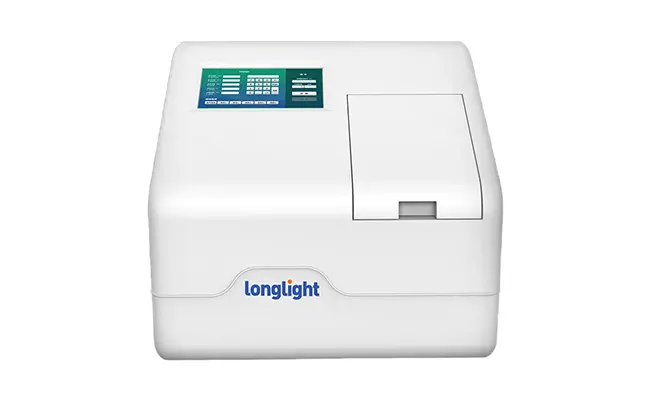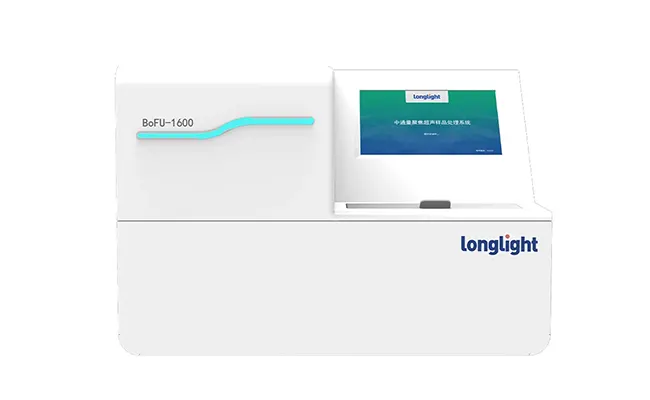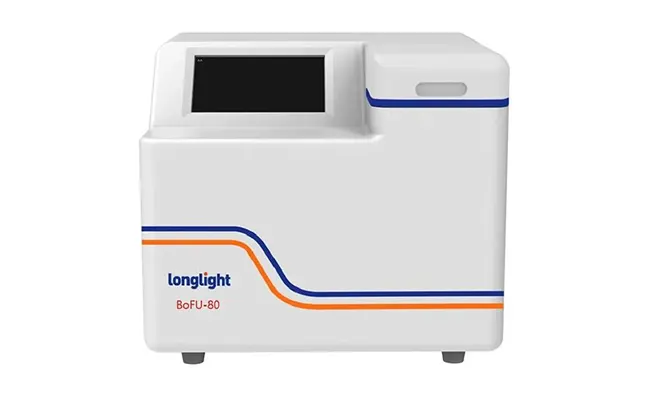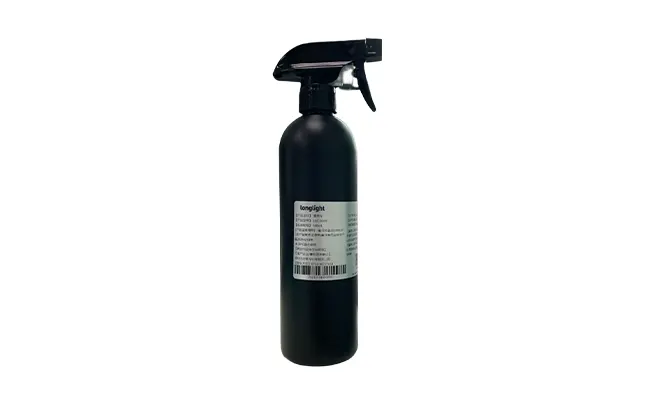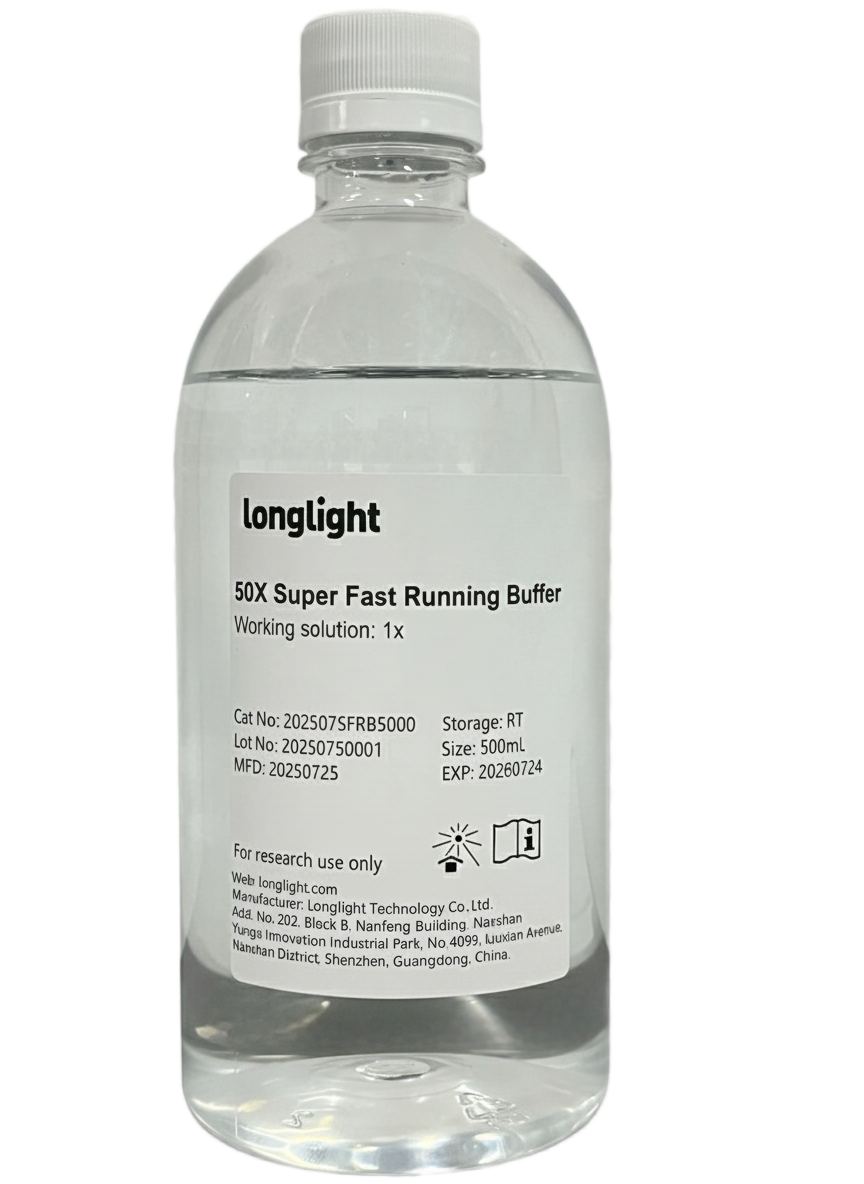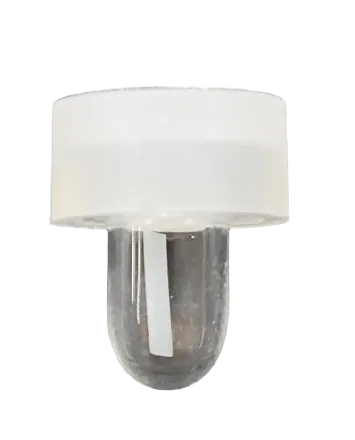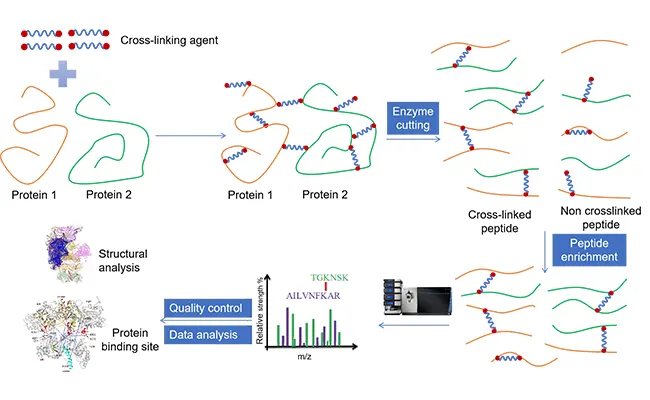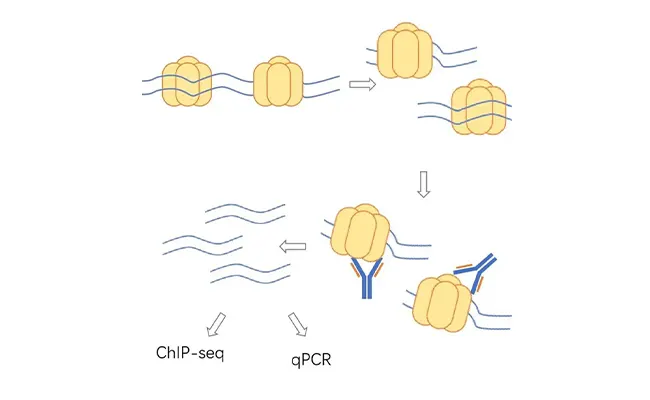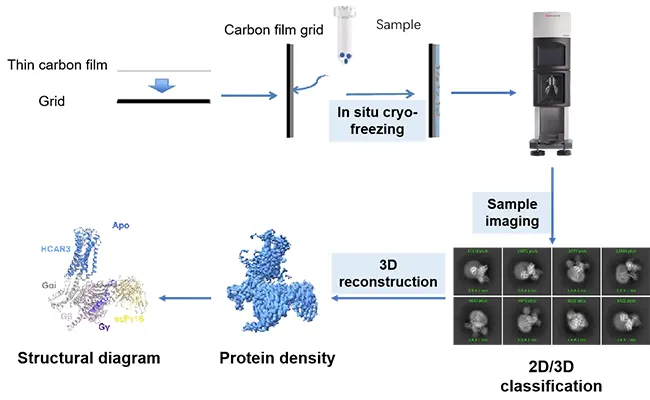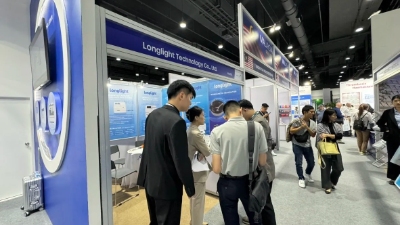関連記事
50X 超高速実行バッファーがゲルの低速分析をどのように解決するか
2025-10-3050X super fast running buffer is Longlight Technology’s answer to the everyday frustration of waiting on agarose gels. If your lab loses hours to sluggish electrophoresis, overheating trays, and smeared bands, this article is for you. We’ll explain the pain points, show how our buffer changes the game, and share a simple, reliable workflow you can start using today.
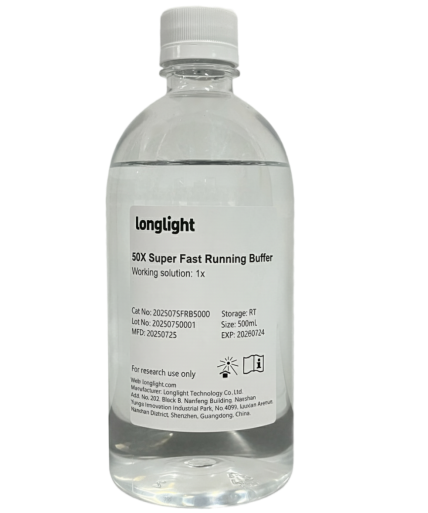
The Pain Of Slow Gel Runs In Modern Labs
Every lab knows the bottleneck: electrophoresis that should be quick becomes a 30 – 60 minute standstill. During busy screens or time-sensitive checks, those minutes stack up. High current warms the gel, bands diffuse, and you re-run samples “just to be safe.” That means more buffer, more agarose, more time at the bench – and delayed decisions for cloning, QC, or submission.
Traditional 1X TAE or TBE are dependable, but they heat under higher voltages. As the temperature rises, you risk warped lanes, curved fronts, and lost resolution. When teams are pushing throughput, these issues translate directly into missed deadlines and higher costs.
❓ What Changes With Low-Ion Strength?
Lower ion strength reduces heat generation at a given field strength. Less heat means you can safely increase voltage without sacrificing resolution. With 50X Super Fast Running Buffer, you can run at 25 – 30 V/cm of gel length and still protect band clarity. In practice, runs that once took half an hour now finish in 5 – 10 minutes – fast enough to check a PCR and move straight to ligation, extraction, or assembly.
How 50X Super Fast Running Buffer Works – And Why It‘s Different
Longlight Technology designed 50X Super Fast Running Buffer specifically for nucleic acid electrophoresis in agarose. The chemistry supports rapid separation while keeping heat low, so your gels behave predictably even at higher field strengths. This is not just “faster” – it’s faster without the compromises that often follow speed.
In side-by-side use, labs report high band sharpness and strong signal for routine PCR fragments, restriction digests, and screens. Crucially, the buffer is compatible with downstream steps: it does not interfere with gel recovery or DNA ligation, so you can move straight from gel to cloning. Many teams also see higher DNA recovery compared with TAE/TBE, which is valuable when your sample is precious or your amplicon is faint.
✅ Key Advantages At A Glance
- Minutes, not hours: Typical agarose runs finish in 5 – 10 minutes at the recommended field strength.
- Low heat, clear bands: Reduced heat generation supports 25 – 30 V/cm while protecting resolution.
- Downstream-friendly: No impact on DNA gel extraction or ligation workflows.
- Efficient & reusable: Strong buffering capacity enables multiple uses without immediate performance drop.
- Stable & convenient: Store both 50X stock and 1X working solution at room temperature; stable for ≥12 months when stored as directed.
From an operations perspective, this means faster turnarounds, fewer reruns, and more consistent decision-making during high-throughput screens. When gel time drops from half an hour to under ten minutes, your entire cloning or QC cadence accelerates.
Practical Guide: From Dilution To Results In Minutes
You don’t need to overhaul your workflow. A few simple steps will deliver consistent speed and clarity.
✅ Quick Start Protocol
- Dilute To 1X (1:50): Mix 20 mL of 50X Super Fast Running Buffer with 980 mL distilled water. Mix thoroughly. Store 1X at room temperature.
- Use The Same Batch: For best consistency, use the same 1X batch for gel casting and for the running buffer.
- Run Conditions: Electrophorese at 25 – 30 V/cm of gel length – about 2.5 – 3× faster than typical 1X TAE/TBE gels. Tune voltage to your tank design and buffer temperature.
- Staining: Add stain to the gel or stain post-run by soaking; both approaches are compatible.
Avoid diluting below 1X. Lower concentrations can change ionic strength and cause abnormal migration. If current or voltage drifts downward mid-run, check whether your power supply has a current or power limit enabled.

(Figure: Speed Performance Comparison of Super Fast Running Buffer at Various
Voltages/Times. M: D5000 ladder (5 μL). Lanes 1-2: 2000 bp PCR product;
Lanes 3-4: 1000 bp PCR product)
- The Figure demonstrates the electrophoresis results of 2000 bp and 1000 bp PCR products on a 1% agarose gel using 1X Super Fast Running Buffer. The results indicate that electrophoresis speed is positively correlated with voltage, and band resolution remains clear even under high voltage.
• Using a standard power supply (300 V), electrophoresis with Super Fast Running Buffer can be completed in 15 minutes, running speed 2.5-3 times faster than typical 1X TAE or TBE.
• Utilizing a high-voltage power supply, electrophoresis time can be dramatically accelerated. At 600 V, runs are completed in approximately 6 minutes, and at 700 V, electrophoresis takes just 4 minutes. This represents a 2.5 to 4-fold increase in speed compared to typical 1X TAE or TBE buffers
✅ Tips For Accuracy & Safety
- Watch The Temperature: In a warm room or during back-to-back runs, buffer can heat. Cool the setup or place the unit on ice as needed.
- Refresh Buffer Periodically: Replace the running buffer on a schedule to maintain reproducibility in demanding assays.
- Use With Legacy Gels Carefully: Gels cast in TAE/TBE can be run in this buffer, but keep voltage ≤200 V; in some cases, results may distort.
- Standard Lab Safety: For research use by professionals only. Wear a lab coat and gloves.
Why Labs Switch – and Stay?
Teams switch to 50X Super Fast Running Buffer for speed, and they stay for reliability. The combination of short run time, low heat, and downstream compatibility removes a hidden bottleneck from the day. Over a week of PCR checks, those “saved minutes” compound into real capacity – one more cloning attempt, one more QC batch, one more dataset shipped.
Ready To Run Faster?
If slow gels are holding back your results, let Longlight Technology help. Get a sample, request pricing, or book a live demo to see 50X Super Fast Running Buffer in your own workflows. Accelerate your gels – accelerate your science.


